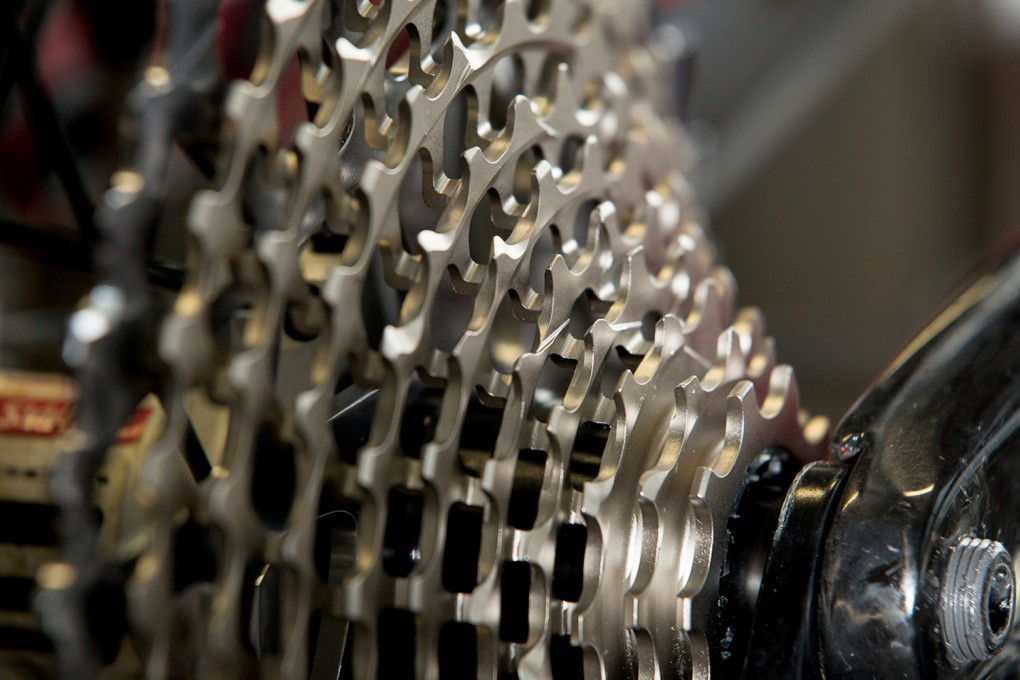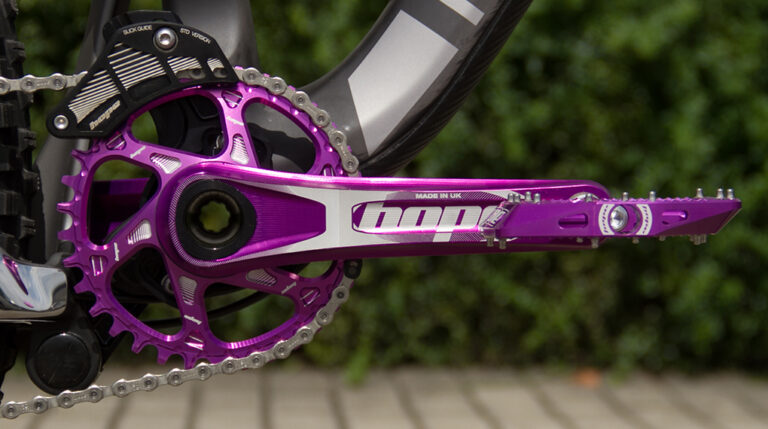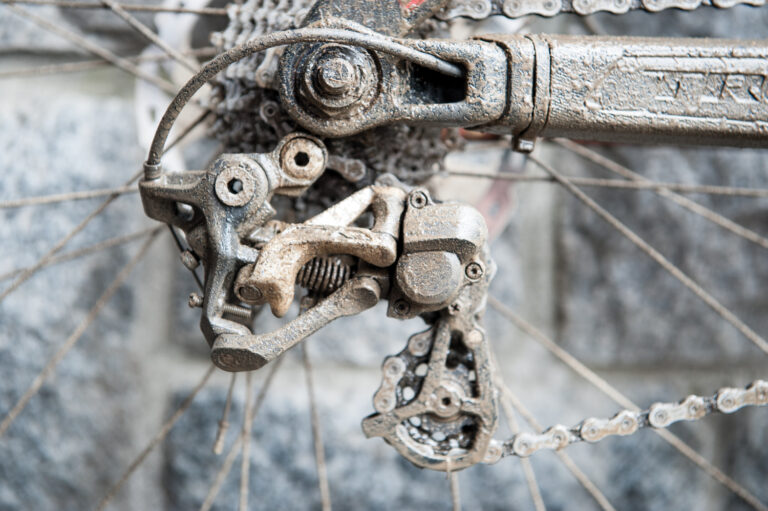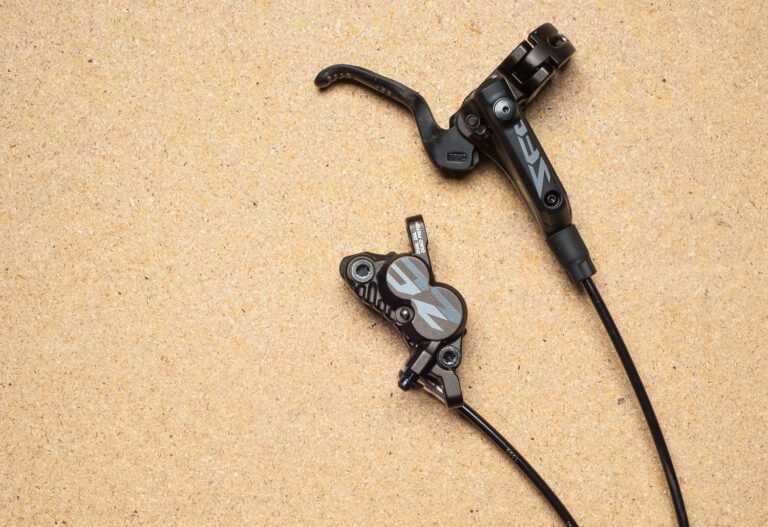
This one goes all the way up to eleven. It’s one louder. Nigel Tufnel would have been chuffed with the SRAM XX1; it’s got that little push over the cliff when you need it.
DIRT ISSUE 128 – OCTOBER 2012
Words by Billy Trailmix. Photos by Adrian Marcoux and Victor Lucas
Plotted on a graph my history with gears looks sinusoidal, a couple of tits or a rollercoaster. I started years ago with just one, then tripled to three with the Sturmey Archer blue, yellow, red with a splash of silver, then shifted up to my zenith with about twenty one for a time before descending slowly back down the block to the trough of single numbers. We’re on the ascendancy again with a leap to the Spinal Tap (the Tufnel reference) number 11.
ROCK ‘N’ ROLL CREATIONThe thing is though; the XX1 isn’t just about 11 cogs. It’s a holistic approach to a single ring drivetrain system and by that I don’t mean incense sticks and whale music. I mean it’s designed as a whole; new chainring, new chain, new rear mech and of course the huge 10–42 cassette, which when new does smell as nice as a joss stick. We’re big fans of the single ring set up for trail/enduro riding, yes you may need to be a bit fitter but it’s just less faff, a less cluttered cockpit, quieter and altogether simpler.
Why 11 then? Well SRAM could have made a nine or ten speed block with this wide range but the shifting increments would have been noticeably larger and not conducive to smooth riding whether climbing or putting the power down. The only big step above 20% (the increase in size from one cog to the next) is at either end of the block.
Visually the first thing you notice about the XX1 is the sheer size of that 42 tooth cog on the cassette, it does look huge, and also the fact that the bike appears to be missing a chaindevice up front. Kind of naked.
So, starting with the beefed up front ring, which will be available in 28, 30, 32, 34, and 36 sizes, the teeth have an alternating pattern of ‘thick and thin’ which synchronise with the ‘wide to narrow’ profile of the chain. This results in a more secure chain/chainring engagement to the extent that you can get away without running a chainguide in certain circumstances. It’s bloody grabby I can tell you that much. The chainrings also have a unique bolthole configuration, which only fit the XX1 spider. You can change rings without removing the crank arm though if you wished to alter your gearing. And I did hear that the front ring is compatible with a ten–speed system too.
The rear mech is also redesigned, it still uses the Type 2 clutch mechanism but now utilises a straight parallelogram (Straight P or X–Horizon) rather than traditional slanted and is specifically designed to work with the single chainring set up. It moves straight in and out and clears the cassette by utilising an offset upper jockey wheel. The amount of free chain when shifting automatically positions the jockey wheel close to the cassette. This results in crisper more precise gear changes and eliminates ghost shifting while pedalling over rough terrain.
That 10–42 rear cassette is also a bit special. The machined one piece unit with the 42er pinned to the back of it requires a different driver body due to the constraints of fitting 11 gears into the same width freehub. Currently only DT Swiss, Mavic and Sram make them, but expect other wheel companies to start manufacturing the XX1 driver body, which will fit onto almost any hub.
The XX1 chain is full of new technology too. Although thinner than a ten–speed it’s not necessarily weaker. Chains don’t break from the power of your thighs; it’s usually bad shifts from front mechs that do the initial damage which then break later. Narrower pins on the chain should mean less leverage on the outer plates, which is usually the point of failure. Of course it could get twatted by a massive rock, which is one reason why you might want to run a taco type bashguard. But don’t think that this chain is weaker because it’s thinner at all.>>






